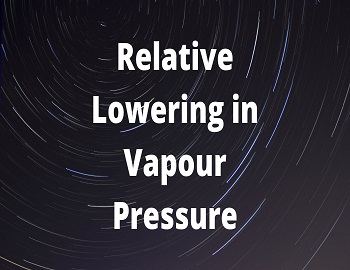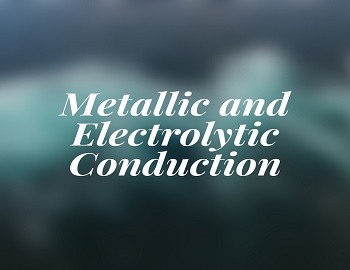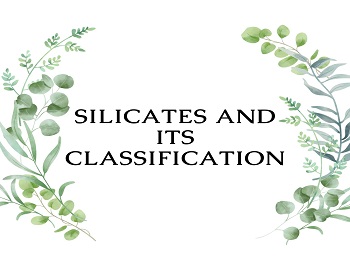Factors Affecting Corrosion:
The following are the two main factors that affect corrosion:
Nature of Metal:
In this case, we can study the following factors.
(1) Physical State of the Metal- Smaller the grain size of the metal or alloy, the greater will be its solubility in the corroding medium, and hence greater will be its corrosion.
(2) Nature of Oxide Film- In an aerated atmosphere all metals get covered with a thin film of metal oxide.
| Specific Volume Ratio = Volume of metal oxide / Volume of metal |
The greater the specific volume ratio, the lesser is the oxidation corrosion.
(3) Position in Galvanic Series- Higher the position of the metal in the galvanic series, the greater is its tendency to become anodic, and hence greater is the rate of corrosion.
(4) Purity of Metal- Pure metals are corrosion resistant. The rate of corrosion increases with an increase of impurities because impurities form minute galvanic cells and the anodic part gets corroded.
(5) Solubilities of Corrosion Product- If the corrosion product is soluble in electrolyte, corrosion of the metal will proceed faster. If it is insoluble then it suppresses corrosion example PbSO4 formed on Pb metal by the action of H2SO4 is insoluble.
(6) Volatility of Corrosion Products- If the corrosion product is more volatile, then the metal surface is exposed to further attack i.e., the corrosion rate will be more, for example, oxide film formed on Molybdenum (MoO3).
In an alloy, the solid solutions are homogeneous and therefore do not form galvanic cells.
Nature of Environment:
In this case, we can study the following factors:
(1) Temperature- With the increase of temperature of the environment, the reaction as well as diffusion rate increases. Therefore, the rate of corrosion also increases.
(2) Humidity- The higher the moisture content in the atmosphere greater the rate of corrosion, because moisture acts as a medium for oxygen in air and behaves as an electrolyte in air. Corrosion is slow in dry air.
| Critical Humidity- It is defined as the relative humidity above which the atmospheric corrosion rate of metal increases sharply. The value of critical humidity depends on the physical characteristics of metal and the nature of corrosion products. |
(3) pH of Media- Acidic media are generally more corrosive than alkaline and neutral media. Atmospheric metals like Al, Pb, etc. dissolve in alkaline solutions as complex ions. Corrosion of metals that are readily attacked by acids can be reduced by increasing pH i.e. basic medium example Zn suffers minimum corrosion at pH = 11.
(4) Relative Area of Anode and Cathode- The rate of corrosion of metal is less when the area of the cathode is smaller. When the cathode area is smaller, the demand for electrons will be less and this results in a decreased rate of dissolution of metal at anodic regions.
In other words, the rate of corrosion at anodic region ∝ Cathodic area / Anodic area
On the other hand, if the area of the cathode is large and the area of the anode is small. Then the demand of electrons by the cathode is large. Therefore to satisfy the demand of electrons by the cathode, the anode will dissolve to a very large extent in the corroding solution so as to give the required electrons. It will lead to severe corrosion at the anode. This corrosion is also called “Intense Corrosion”.
For example, if cathodic coatings on a metal develop some pores or cracks, it will lead to intense corrosion of the base metal.
(5) Conductance of Corrosion Medium- In underground structures, the conductance of the medium (soil) is important.
The conductance of dry sandy soil is lower than those of clayey soils. Therefore metals buried under clayey and mineralized soils undergo severe corrosion.
(6) Nature of Electrolyte- The presence of anions like silicates in the medium results in insoluble corrosion products, which inhibit further corrosion.
On the other hand, chloride ions destroy the protective film of the metal, therefore exposing the metal surface to further corrosion.
(7) Presence of Impurities in Atmosphere- In the presence of the gases like CO2, H2S, HCl, H2SO4, etc. in the atmosphere, the acidity of the liquid adjacent to the metal surface increases. Therefore its electrical conductivity also increases and it results in the increase of corrosion.
For example in the marine atmosphere, the presence of NaCl and other chlorides in seawater leads to increased conductivity of the liquid in contact with metal. Hence corrosion is speeded up.
(8) Presence of Suspended Impurities in Atmosphere- These are of two types:
- Chemically Active- Impurities like NaCl, (NH4)2SO4 absorb moisture and act as strong electrolytes, therefore increasing corrosion.
- Chemically Inactive- For example charcoal. These absorb both moisture and sulfur gases and slowly enhance corrosion.









Comments (No)